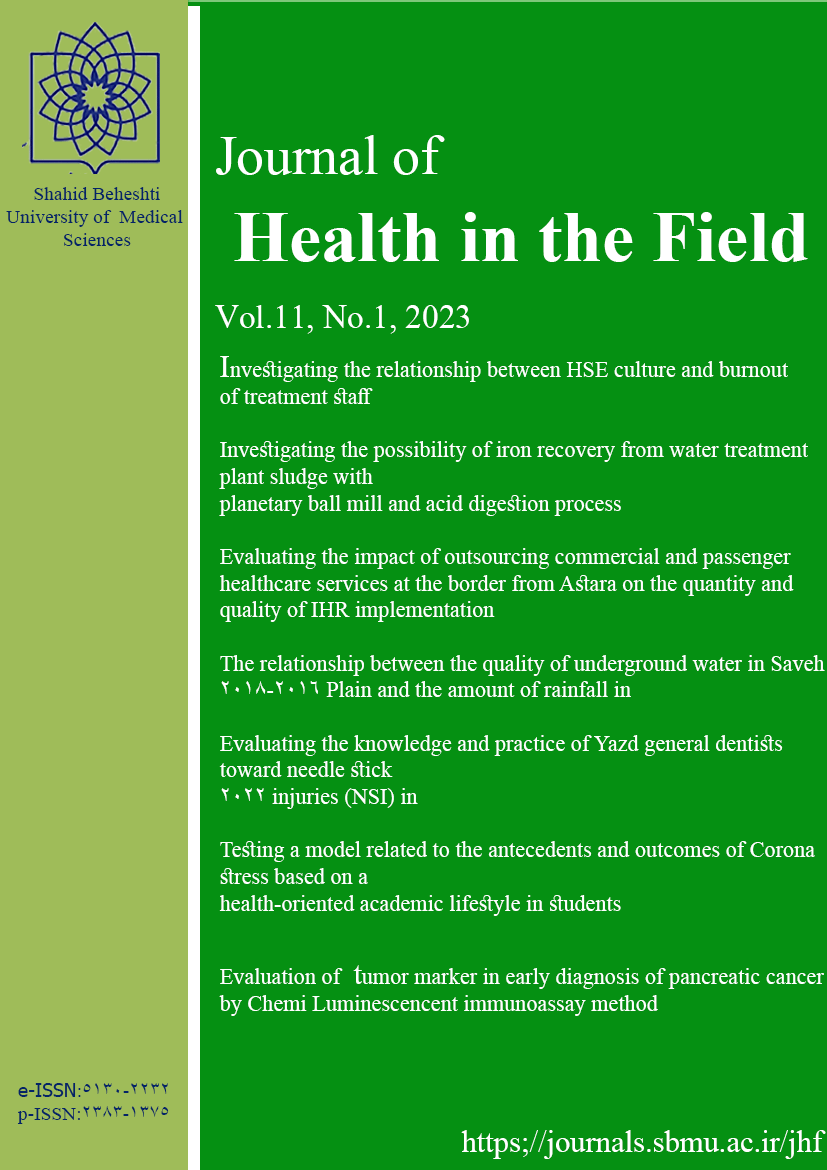Study of nutritional knowledge, attitudes, and behaviors among the elderly people: A cross-sectional research in Karaj city
Journal of Behdasht dar Arseh (i.e., Health in the Field),
Vol. 11 No. 2 (1402),
31 Bahman 2024,
Page 1-10
https://doi.org/10.22037/jhf.v11i2.42330
Background and Aims: Neglecting nutritional needs of elderly people creates the basis for the occurrence of many diseases. Measuring nutritional knowledge, attitudes and behavior as a needs assessment is one of the first steps in intervention planning. The present study aimed to evaluate nutritional knowledge, attitudes, and behaviors among the elderly people in Karaj, Iran.
Materials and Methods: This cross-sectional (descriptive–analytic) study was conducted on 393 elderlies attending in the health centers of Karaj, Iran. The sampling method was multi-stage and the tool used for data gathering was a questionnaire that has passed the validity and reliability stages, including the demographic information of people and questions related to nutritional knowledge, attitudes and behaviors of individuals. Data analysis was performed in SPSS version 16 using descriptive and inferential statistics. Ethical considerations were observed in all stages of the study.
Results: The elderlies showed average knowledge and had a good condition in terms of attitude and behavior. While the knowledge, attitude, and behavior (KAB) of participants were statistically associated with their education level and residence region (p < 0.001); however, age and gender were not significantly correlated with the subjects KAB (p > 0.05). Also, a significant correlation was denoted between the knowledge scores of the studied subjects and the family structure (p = 0.038).
Conclusion: Knowledge is not enough to make facilitate positive health changes. Educational interventions and emphasis on proper health habits should be persistent so that individuals’ attitudes and performance could visibly change and the subsequent positive impact on health would become tangible. Designing and implementation of educational programs are strongly recommended to improve and adjust the diet of the elderly.
